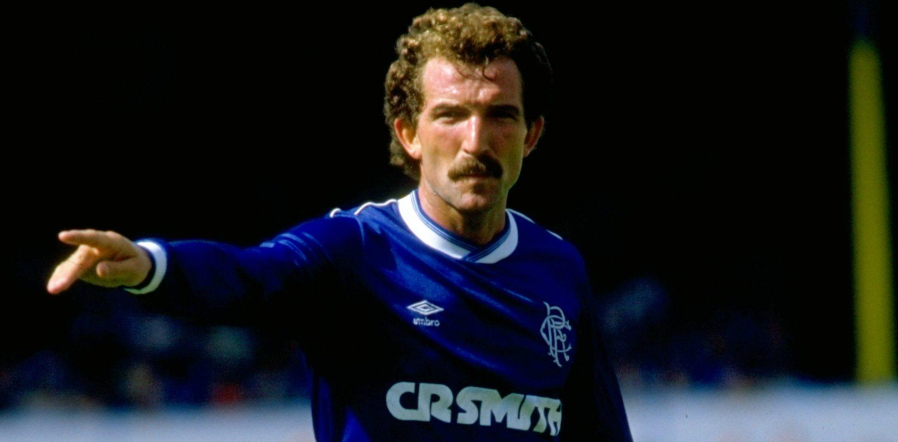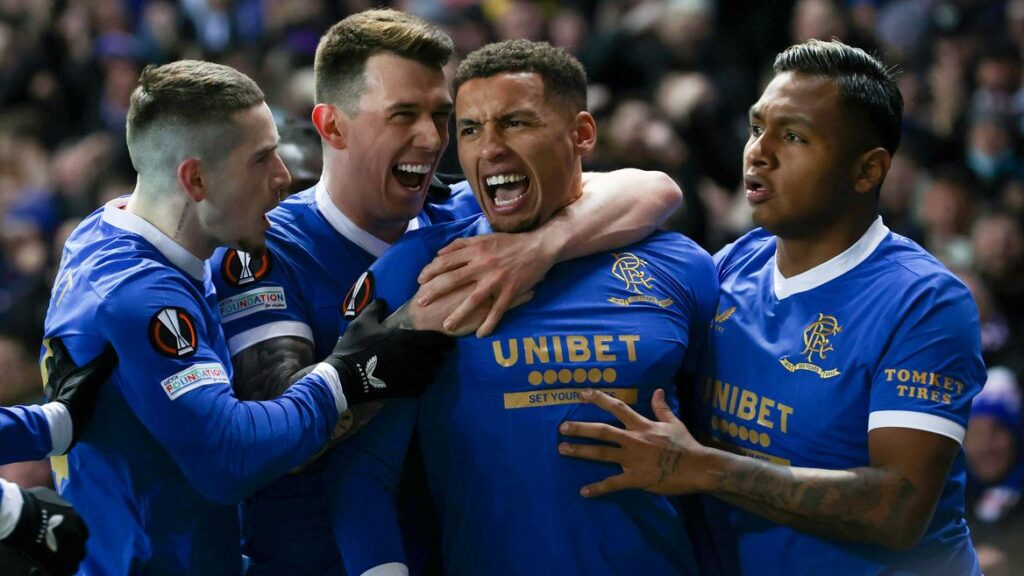Liverpool: 1978-1984
Welcome back for part 2 of our special 3-part series looking at the Road to Rangers for Graeme Souness. Here, we are talking all things Liverpool as Souness swaps Middlesbrough for Merseyside and takes aim at the elite medals both domestically and in Europe. Let’s start by recapping the events that brought Souness to Liverpool…
Interest in Souness was high in the summer of ’77. He was 24 and about to enter the peak years of his career. It was becoming clear to both him and potential suitors that he was a big fish in a small pond at Middlesbrough and his skills could and should be showcased on a grander stage. Leeds Utd and Manchester City were said to have been interested in his services during the opening months of the 1977/78 season. However, when Souness learned of the interest coming from the red half of Merseyside there was only one club on his mind.
Souness has openly stated that he agitated for the move from Ayresome Park to Anfield. He basically just annoyed everyone at Middlesbrough enough into making the move happen, including by making a series of statements to the press trying to force the move through:
“I am fed up, disenchanted with the game. I feel like a good holiday away from it all”.
Eventually, his efforts paid off. In January 1978, Liverpool had a fee of £352,000 accepted and Souness was allowed to leave. The pettiness in this transfer fee is something to be admired. Manchester Utd had set a transfer record between English clubs the previous week by paying Leeds £350,000 to sign Joe Jordan. The extra £2,000 on Souness’ transfer fee was purely to take that record away from Utd. Souness was not the only Scottish reinforcement signed by Bob Paisley, as Alan Hansen and Kenny Dalglish also signed for Liverpool. Souness claimed that the dressing room atmosphere was very relaxed and natural for a team that were the reigning champions of Europe, stating in his autobiography:
“I remember how normal and ordinary it all was. No prima donnas. No superstars. I made only one error on that first morning. I asked Tommy Smith if I could borrow his hairdryer and turned to Phil Neal and said pointedly: ‘Everyone is allowed one mistake’. I took my own in the future”.
Souness made his Liverpool debut shortly after signing, coming on as a substitute in a 1-0 victory away at West Brom. He didn’t need to wait long for his first goal in a Liverpool jersey to come either and It couldn’t have come in a bigger fixture.
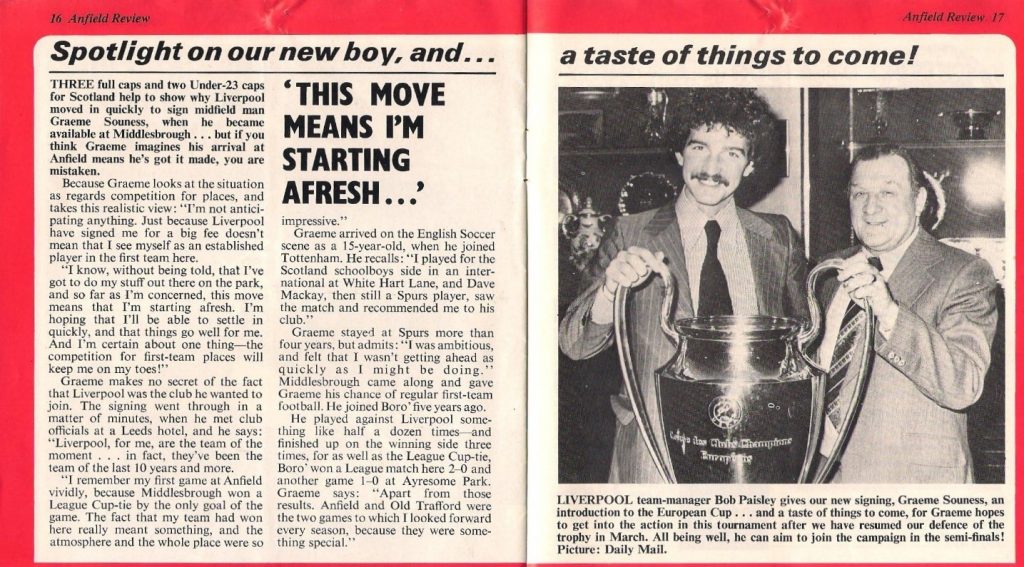
On the 25th February that year Liverpool hosted Manchester Utd at Anfield in what is always one of the biggest games of the season however this game in particular had an extra element to it as Souness came up against Joe Jordan, the man he had replaced as being the most expensive player to have been transferred between English clubs. Both sides were horribly out of form, with both having won only one of their previous five fixtures. Liverpool dominated the early exchanges having an effort cleaned off the line before hitting the woodwork. Despite this they were struggling to make the breakthrough and it was evident that this was one of those times where It was either going to take a lot of luck or a lot of skill to break the deadlock. Fortunately for Liverpool, Souness was on hand to provide the latter. Souness played the ball out wide to Terry McDermott who swung in an inch perfect cross. Unmarked in the box, Souness caught the volley flush with his left foot and sent the ball crashing into Paddy Roche’s top left-hand corner. Liverpool went on to win the game 3-1 to the delight of a raucous Anfield crowd. Souness’ goal was later voted the BBC’s goal of the season.
The season just kept getting better and better for Souness. He made his full European debut in the second leg of Liverpool’s European Cup Semi-Final victory over Borussia Monchengladbach. Trailing 2-1 from the first leg in Monchengladbach, Liverpool ran out 3-0 winners to secure a 4-2 win on aggregate and a trip to Wembley to play Club Brugge in the final. The final itself hasn’t gone down in the history books as a classic by any means, but Souness played a role in helping Liverpool retain the trophy. Latching on to the end of a poor Brugge clearance on the edge of the box, he expertly controlled the ball with his chest before playing in Kenny Dalglish who scored the only goal of the game. Souness was delighted and joked:
“The nearest I had been to European competition before was the Eurovision song contest, so it was a dream come true when I won a European Champions medal within four months”.
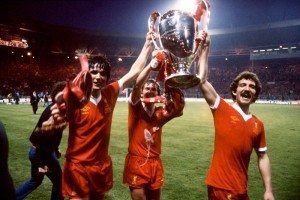
This began a period of sustained success for Souness and Liverpool as a club. The 1978/79 season saw Liverpool become one of the first English clubs to have a shirt sponsor after striking a deal with Hitachi. Souness had firmly rooted himself into the starting XI and played a total of 53 games for the club that season scoring 9 goals, one of which came against his former club Middlesbrough in a 2-0 win at Anfield. Souness’ goals and appearances resulted in him winning his first top-flight league medal, as Liverpool won the First Division by 8 points ahead of Nottingham Forest. Liverpool amassed a record points tally (under the 2 points for a win system) of 68 points, and only conceded 4 times at Anfield all season.
Liverpool kicked off the 1979/80 season as defending champions and as per custom they took part in the traditional season curtain raiser as they defeated FA Cup holders Arsenal 3-1 in the FA Charity Shield. That was to be the first of Souness’ 59 appearances he would make that season for Liverpool, scoring 2 goals. Liverpool fought old rivals Manchester United for the title that season, who were posing a real challenge under Dave Sexton. However, Liverpool retained their crown at Anfield in the penultimate game of the season after defeating Aston Villa 4-1 and finished the season as champions on 60 points, 2 ahead of Utd, who lost 2-0 at Leeds on the same day.
Liverpool kicked off the 1980/81 season by retaining the FA Charity Shield by beating West Ham 1-0 a Wembley, with Souness playing the full 90 minutes. However, this success did not translate itself into Liverpool’s early league form, as they won just 2 of their first 5 games including a 2-0 away defeat to newly promoted Leicester. That set the tone for a relatively poor league campaign by the standards of the club and manager Bob Paisley, as Liverpool relinquished the championship they had held since 1979 by finishing in 5th place, 9 points behind champions Aston Villa. Liverpool’s success that season was too however come in the cup competitions that season, both at domestic and European level.
Domestically, Liverpool reached the League Cup Final after overcoming Bradford, Swindon, Portsmouth, Birmingham before eventually beating Manchester City 2-1 on aggregate in the Semi-final. An attendance of 100,000 was recorded for the initial game at Wembley on the 14th March ’81. Graeme Souness played the full 120 minutes in a game that by the 118th minute seemed to be heading to a 0-0 draw and a replay at a later date when Alan Kennedy opened the scoring for Liverpool and seemed to have won the game. The goal was hugely controversial as it was viewed that Liverpool’s Sammy Lee was in an offside position and obstructing Phil Parkes in the West Ham goal. Referee Clive Thomas, who was not short of controversy throughout his career, allowed the goal to stand and it seemed like Liverpool were about to win the cup in a deeply controversial manor. Despite a late West Ham equaliser through a penalty in the 120th minute, the Hammers manager John Lyall hit out at Thomas saying he felt cheated by his decision to allow the Liverpool goal to stand.
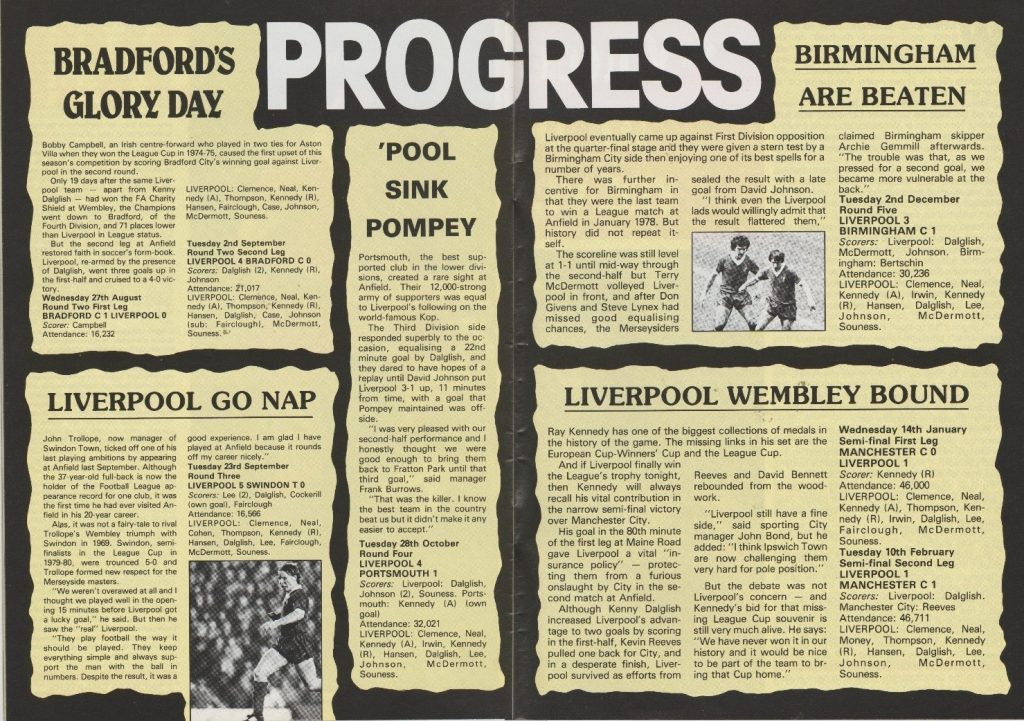
The replay was scheduled to be played at Villa Park 16 days later and despite Souness not playing in the replay, Liverpool ran out 2-1 winners thanks to 2 goals in 3 minutes from Souness’ fellow Scots Dalglish and Hansen. This was the first time in the history of the club that Liverpool had won the competition.
The European stage proved equally as fruitful for Souness that season. His European campaign began in style, as Souness netted a hattrick in a 10-1 demolition of Finnish minnows Oulun Palloseura at Anfield, resulting in a 11-2 aggregate win. Next up for Souness and Liverpool were Scottish minnows Aberdeen, managed then by Sir Alex Ferguson. After a convincing 5-0 on aggregate, Liverpool faced Bulgarian outfit CSKA Sofia in the Quarter-final. With the first leg being held at Anfield, this was to prove to be one of Souness’ finest every European performances, as he netted yet another European hattrick as Liverpool ran out 5-1 winners on the night, following it up with a solid 1-0 win in Sofia. Standing in way of a place in the final in Paris was the reigning champions of Germany, Bayern Munich. A 0-0 draw at Anfield meant that Liverpool held the silver bullet of the away goal going into the second leg in Munich. However, their chances of netting an away goal were significantly hampered when Dalglish was forced off through injury early in the game. However, in the 83rd minute and the game still poised at 0-0, Ray Kennedy scored for Liverpool to give them the advantage. A late equaliser from Karl-Heinz Rummenigge was not enough for Bayern and Liverpool progressed to their 3rd European Cup Final.
In that final they faced Real Madrid, who were appearing in the final for the 9th time, having won 6 times previously. With Liverpool finishing 5th and Real Madrid finishing 2nd in their respective leagues, both sides needed to win to ensure they qualified for the European Cup the following season. The match was tense and Madrid manager Vujadin Boskov had specifically instructed his midfield three of del Bosque, Angel and Stielike to sit on Souness when he had the ball in an effort to nullify his threat. Despite this, Souness almost gave Liverpool the lead just before half-time as his perfectly timed run allowed him to break free of the Madrid defence on to the end of a pass by Dalglish though despite Souness’ effort only being parried by Agustin in the Madrid goal, he could not get to the rebound in time and Madrid managed to get to the break with the scores level at 0-0.
The game continued to be tight in the second half as both sides proved a match for each other. However, Liverpool managed to find the winner in the 82nd minute thanks to a Alan Kennedy strike which secured Liverpool their 3rd European Cup and Souness’ 2nd. Alongside his winners’ medal, Souness also shared the European Cup Golden Boot with teammate Terry McDermott having scored 6 goals each.

The 1981/82 season was to prove to be one of the most personally significant in Souness’ career. Liverpool had failed to kick on from their heroics in Paris and by December found themselves sitting 12th place having only managed to win 6 out of their 17 league games. Nobody in the squad was immune from the wrath of Bob Paisley as he set about trying to breathe new life into the underperforming side.
In doing so, he had to address the elephant in the room which was the performances of the club Captain, Phil Thompson, whose performances had been so sub-par that there were calls from some quarters to drop him from the squad entirely. Deciding that both stripping Thompson of the captaincy and dropping him from the team might be changing too much too fast, Paisley decided in a phased approach by first stripping Thompson of the captaincy and offering it to Souness who duly accepted.
Now, while it can never be said that Souness and Thompson were particularly close outside of football but this was the moment when relations between the two totally broke down in its entirely as Thompson accused Souness of ‘stealing’ the captaincy from him. Souness refused to back down and the situation escalated into a major feud resulting in the two men not speaking for months. It must be said that this didn’t affect Souness in the slightest as he maintained he valued success far more than popularity.
The incident didn’t seem to bother the result of the squad either as their form in the New Year was nothing short of astonishing. With Souness as captain, Liverpool won 20 out of their 25 matches, only losing twice, as they blew the rest of the league away and won the title by 4 points ahead of Ipswich in 2nd place.
However, that wasn’t the only trophy that Souness would lift as captain of Liverpool that season. Souness came up against his former side Tottenham Hotspur In the League Cup Final in March of 1982 after overcoming Ipswich 4-2 on aggregate in the previous round. The final started horribly for Souness as his fellow Scot Steve Archibald scored for Spurs with just 11 minutes gone in the game. It looked like they would hold on to that lead to win the cup until Spurs… Well, remembered they were Spurs. With just 3 minutes left Ronnie Wheelan popped up with an equaliser to send the game to extra time and in the 111th minute he scored again to give Liverpool the lead. With just a minute remaining, Ian Rush killed the game off and delivered Liverpool.
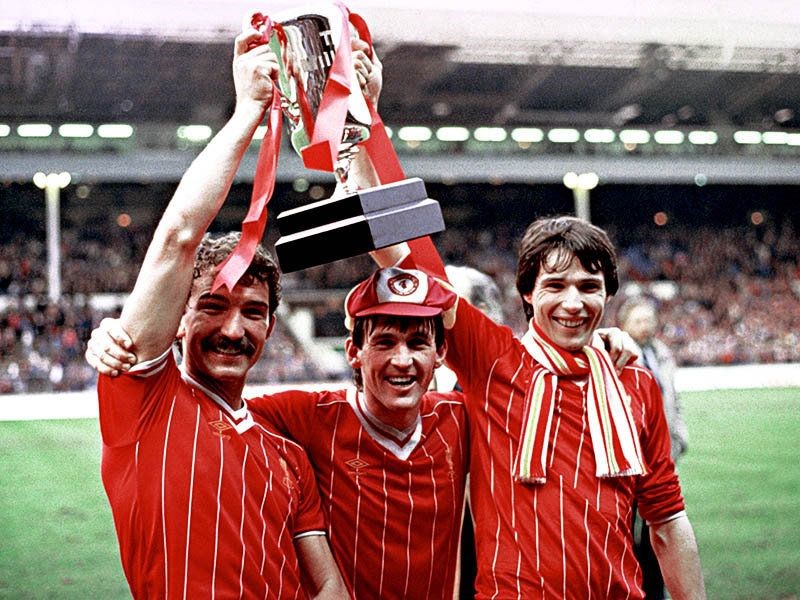
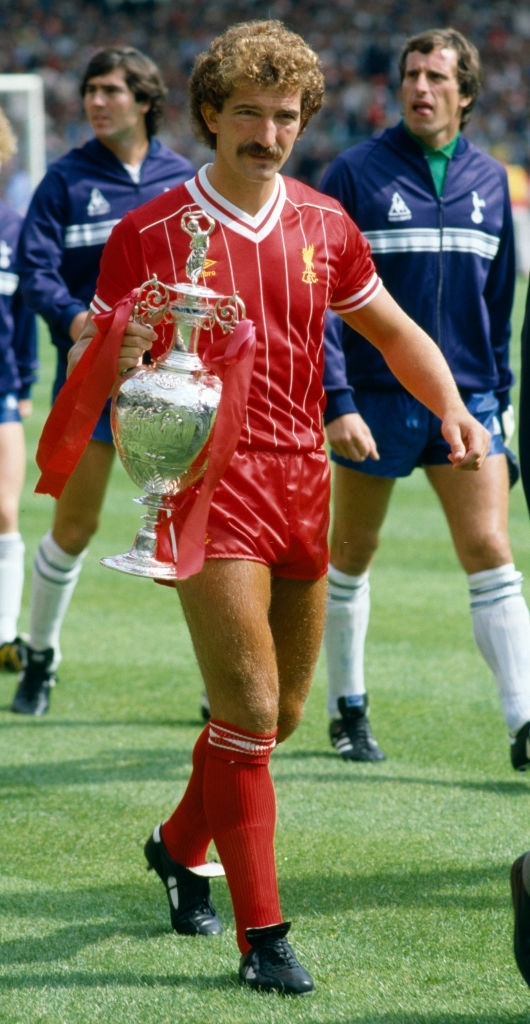
Souness lead Liverpool into the 1982/83 season as captain with a tase for silverware and a determination to take the club further, in a season which proved to be Bob Paisleys last in charge as he bowed out in retirement at the end of the season. Souness once again faced his former side at Wembley as the season kicked off at Wembley for the FA Charity Shield against Tottenham, which Liverpool won 1-0 thanks to a first half goal from Ian Rush. The side used this as a springboard to carry on their superb league form from the latter half of the previous season with some thoroughly entertaining high-scoring games. These included a 4-3 win over Nottingham Forrest, a 3-3 draw with Luton Town and a 5-0 win over Southampton with Souness scoring in all 3 of these games. A 5-1 demolition of Notts County on New Year’s Day 1983 made it the 5th time that Liverpool had scored 5 goals at Anfield already that season, with Guardian Journalist Simon Inglis claiming in his match report:
“As the Years Roll by, the superlatives begin to pale somewhat as Liverpool get better all the time”.
League duty was being balanced with a run to Wembley in the League Cup that season as well. Souness scored an 87th minute winner against West Ham in the Quarter-final to set up a two-legged clash with Burnley in the Semi’s. A 3-0 home win in which Souness scored the first goal meant the second leg at Turf Moor was a formality and despite a 1-0 defeat Liverpool went through 3-1 on aggregate to face old rivals Manchester United in the Final. United raced into an early lead thanks to a goal from Norman Whiteside in the 12th minute. Liverpool battled to get back into the game and eventually found an equaliser 15 minutes from time as Alan Kennedy struck to take the game to extra time and with just 6 minutes of the 30 played, Ronnie Wheelan ensured that it would be Liverpool victorious once again at Wembley. For the trophy presentation, Souness took a step back and allowed retiring manager Bob Paisley to lift the trophy to the adulation of the Liverpool support.
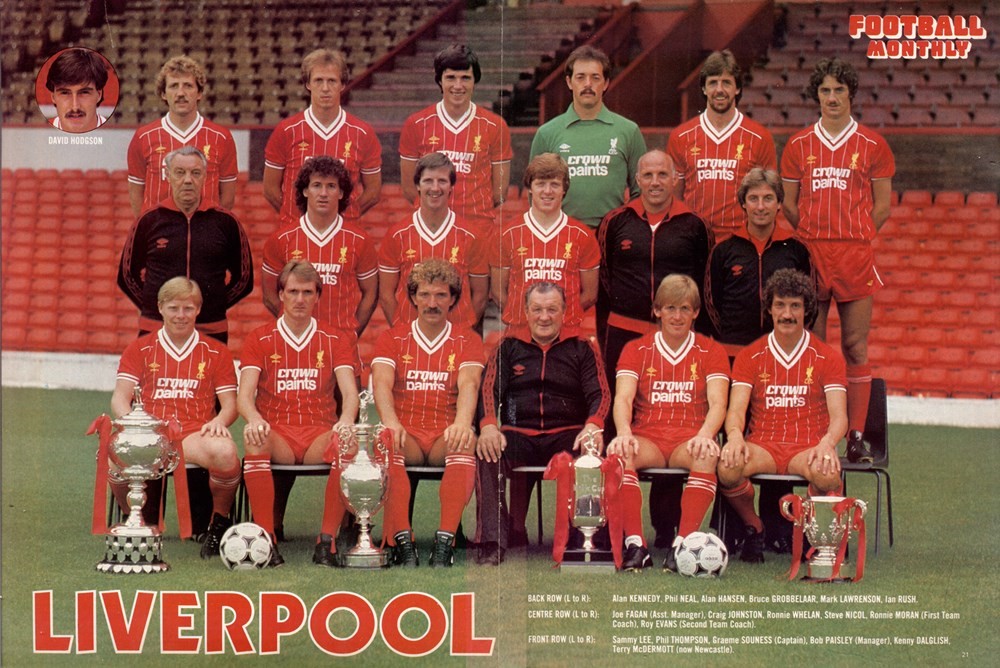
In the following game, Souness was once again on the scoresheet as Liverpool swatted aside Arsenal with yet another victory at Anfield. This was the beginning of a run of 15 games without defeat after the New Year which, after a 0-0 draw away at Coventry City, took Liverpool 14 points clear at the top and a win away from the title with 6 games remaining (this being the first season where any football association awarded teams 3pts for a win).
Easy enough, right?
Possibly not as easy as Souness or Liverpool would have hoped. Their first attempt at getting over the line came away at the Dell against Southampton and despite being 2-1 up inside the first 16 minutes, Southampton fought back and ended up delaying Liverpool’s title celebrations with a 3-2 win. No matter, Liverpool had lowly 13th placed Norwich to face in their next fixture at Anfield. This was the kind of fixture that Liverpool had gotten into the routine of winning with an almost monotonous ease and therefore fans turned up treating this as less of a football match and more of a coronation. A local newspaper got so ahead of themselves they published an 8-page pull-out titled ‘Reds Title Glory’ on the morning of the match. However, the only thing that was red after this game was the face of the editor that signed off on the pull-outs premature publication, as Norwich stunned the Kop with a 2-0 win to once again delay Liverpool winning the title. That was to be the only game Liverpool would lose at Anfield all season.
Liverpool would eventually win the title in their next game at White Hart Lane… But not in the fashion they would have hoped. Another insipid performance meant that Liverpool succumbed to a 2-0 defeat to Souness’ old club Spurs on a day in which he was hoping to win the title on their patch with a victory. Despite the result, Liverpool were crowned champions of England that day as Manchester United could only manage a draw away at Norwich meaning that their (remarkably intact) 14-point lead at the top was unassailable. At White Hart Lane however, there were only muted celebrations according to reports from Robert Armstrong:
“Liverpool sat in the visitors dressing room deflated and uninterested in the champagne Keith Burkinshaw [the Spurs manager] had kindly handed out for their celebrations… Bob Paisley, the arch pragmatist, was not jumping for joy. The habit of winning is everything at Anfield”.
Regardless, Souness was a Liverpool title winning captain once again alongside a successfully defended FA Community Shield and League Cup. A remarkable feat to carry him into what would be his final season at Anfield, and his most successful.
With legendary manager Bob Paisley retiring, Joe Fagan (a graduate of the famous Liverpool boot room) stepped into the hotseat for the forthcoming season. Once again for Souness, his season started at Wembley with the Charity Shield in front of a crowd of 92,000, although unfortunately not with the same success. Facing the previous seasons FA Cup winners Manchester United, Liverpool succumbed to a brace from Manchester United captain Bryan Robson was enough to secure Manchester United the trophy with a 2-0 victory.
Liverpool began their title defence away to Wolves but the summer didn’t seem to do any favours for Liverpool’s form, as a 1-1 draw made it 8 consecutive league games without a win across the last two seasons. Souness brought that run to an end with a superb effort against Norwich at Carrow Road, despite waves after waves of Norwich pressure and multiple efforts from the canaries cleared off the Liverpool goal line. A much-needed win for Souness and Fagan, expertly summed up by Charles Burgess:
“With any other team a number of efforts headed off their own goal line would be considered lucky, but in the case of the league champions we have seen it so often before that luck does not seem to come into it”.
Alongside Liverpool’s campaign to retain the title, Souness had a campaign to retain the League Cup to balance alongside it. A tournament Souness had enjoyed much success in (Having won the previous 4), this particular year would prove to be one to remember.
Liverpool’s run to the final this season didn’t come without its complications. They made hard work seeing off Fulham who were struggling at the foot of the second division at the time. They were unlucky to not beat Liverpool at Craven Cottage and then managed a 1-1 draw at Anfield to force yet another game at Craven Cottage, in which they once again held Liverpool for 114 minutes until a Graeme Souness strike finally sealed the tie for Liverpool. Souness was on target again in the next round as Liverpool stuttered to another 1-1 draw away to Birmingham (seeing a theme here?). Liverpool dispatched them 3-0 at Anfield and then progressed past Sheffield Wednesday and Walsall in the Semi-final.
This set up a remarkable first ever Merseyside derby in the final. The game finished goalless at Wembley, and as the two sides trudged off the pitch in the rain both stands broke out into a single unified chant of ‘Merseyside… Merseyside…’. For some reason, I don’t see that kind of thing catching on in the next Old Firm cup final.
The draw meant that the tie was to go to a replay at Maine Road three days later and this was to prove to be one of Souness’ finest hours as Liverpool Captain. As Merseyside went to Manchester, they witnessed a superb move by Liverpool as Souness found the space to turn and shoot from the edge of the penalty area. His shot took an unsighted Neville Southall by surprise and the ball found its way into the net at his near post.

This was a body blow to Everton who had been so impressive over the two games until that point and Liverpool managed to see out the game to win the League Cup for the fourth year on the bounce. The story of this final was beautifully summed up by Journalist David Lacey, who in his match report said:
“While Everton undoubtedly had the bottle, Liverpool, crucially, had the class”.
Back to the league and Liverpool were facing a much stiffer challenge for the title than in the previous season. Themselves, Southampton, Nottingham Forrest, Manchester United and QPR were all in with a realistic chance of being crowned champions of England. However, on the 12th May 1984, Liverpool joined the ranks of Arsenal and Huddersfield by winning the league for three consecutive seasons with a goalless draw away to Notts County. Manchester United and Southampton had both dropped point earlier in the day meaning that Liverpool only needed the pint to secure the championship which they gained with the minimal of fuss. A domestic double for Souness’ side, but their eyes were now firmly set on the prize of the European Cup once again.
Unlike their form in the League Cup, Liverpool’s form in the European Cup had been formidable. It took until the Quarter-final tie against Benfica for them to concede a goal in the competition, and even at that it only proved to be a consolation as they demolished Benfica 4-1 at the Estadio da Luiz. They then played Dinamo Bucharest in the Semi-final in a sensational tie where Souness would once again grab the headlines, but for somewhat different reasons…
“I heard it. A thud. I just saw a red blur and heard a boom”.
Those were the words of Alan Kennedy, when asked if he had seen Graeme Souness break the jaw of the Dinamo Bucharest Captain Lica Movila during the first leg of their Semi-final. Sammy Lee had given Liverpool the lead after 25 minutes but with 20 minutes left and Dinamo pushing up the park in search of an equaliser, their Captain Movila law on the ground with a broken Jaw.
“Movila was the worst of the lot [said Souness]. He kicked everything that moved and three times caught me with punches off the ball. I’d had enough… it was the best punch I delivered in my life”.
Arguably the most astounding element of the incident is that the referee and his officials totally missed it, to the point when they eventually realised that Moliva was injured Souness was 40 yards up the park and indicating to the referee that Moliva was just play acting!
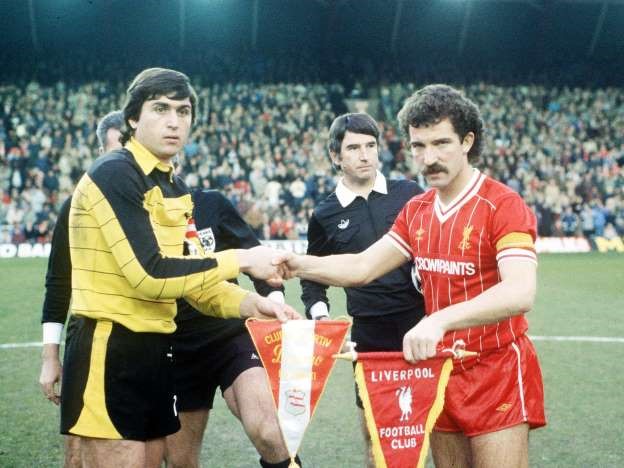
When Liverpool landed in Bucharest for the return leg, they were greeted by a baying mob at the airport who were screaming at Souness, who had become a hate figure in the city since the punch.
“Souey (sic), of course, didn’t give a shit [Alan Kennedy stated]. He was absolutely loving it. Loving it”.
Despite the Dinamo players trying to snap him whenever he touched the ball, Souness managed to play a majestic diagonal ball to Ian Rush in the box who buried the chance. There’s a reason why Souness was known to his teammates as Champagne Charlie – a lesser player would have crumbled under the pressure he was put under that night. That goal set Liverpool on their way to a 2-1 win with Rush grabbing another which booked their place at the Stadio Olimpico, the home of Roma who just so happened to be their opponents.
Again, contrary to their domestic final against Everton, it cannot be said for this one that the better team may have lost. Liverpool were undoubtedly deserved winners in this game, albeit in one of the most dramatic ways possible. Liverpool were able to readily control the pace of the game through the inexhaustible Souness and took an early lead through Phil Neal in the 13th minute however that was cancelled out by an equaliser shortly before half time. That was to be that for the goals as the game edged to extra time and then to penalties.
Liverpool could not have gotten off to worse start as Steve Nicol blasted the first penalty over the shootout with allowed Roma Captain Agostino Di Bartolomei to give the Italians the lead. It was to be short lived however as Phil Neal scored from the spot and it was Roma’s turn to miss as Bruno Conti blasted his penalty over the top as well. Souness stepped up with penalty number three and converted. Ian Rush also scored and a miss by Francesssco Grazini allowed Alan Kennedy the chance to seal the European Cup for Liverpool for the fourth time, which he duly did.
In what was to prove his final game for the club, Graeme Souness was now a European Cup winning captain.
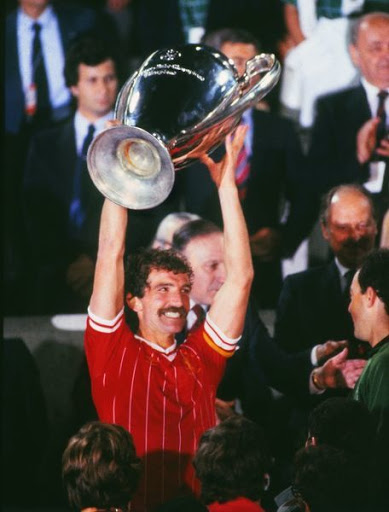
Joining Sampdoria – 1984
If you’re asking why the Captain of the English and European champions would be actively seeking a move away from Liverpool in utter confusion, you would be pretty much every football fan in Europe in the Summer of 1984 as on the 1st July 1984, Souness touched down in Italy to sign for an up and coming Serie A side called Sampdoria. As soon as his plane touched the tarmac he was whizzed off to the club head offices where he was greeted by 3,000 fans eager to catch a glimpse of the £650,000 signing. The reason for this sudden change of destination? His wife had inherited a sum of money but the way the financial transaction was structured she would need to leave the country. Therefore, Souness was on to pastures new and ready to take on a new challenge in Italy.
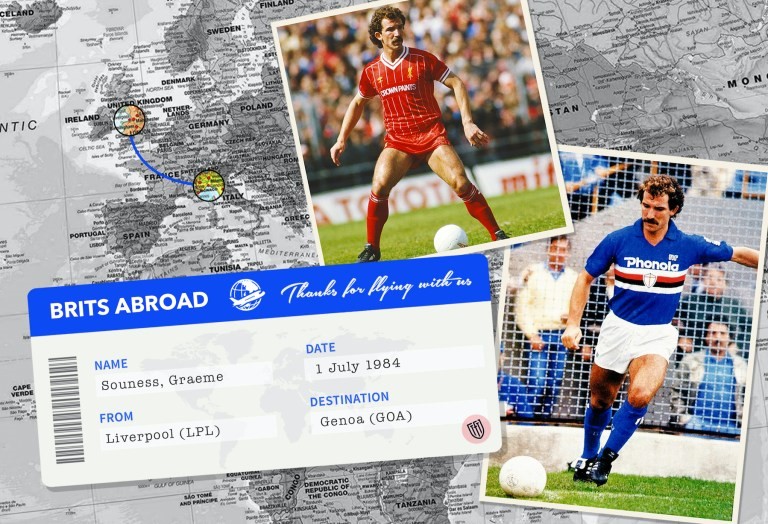
In the part 3, we will look at Souness’ time in Serie A, his international career and the conclusion of his Road to Rangers.

